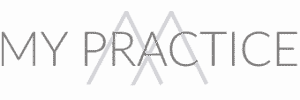Osteoarthritis (OA) is the most common type of arthritis. Effecting the protective cartilage that cushions joints, OA occurs most frequently in the knees, hands, hips, and spine, earning it the nickname “wear and tear arthritis.” However, OA is not caused by wear and tear, but rather by the gradual breakdown of tissue over time.
Risk factors for OA include joint injuries, repeated joint stress, bone deformities, and obesity. Risks increase with age, though the condition is more common in women and may also be related to genetics. However, the underlying causes of OA are not always known.
Symptoms of OA
Symptoms of OA may include:
- Pain and swelling of the joints
- Increased tenderness with pressure
- Loss of flexibility and stiffness in the joints
- Grating, popping, or cracking joints
- Bone spurs to protect affected joints
Many of the symptoms of OA, such as pain and stiffness, are more common upon waking or after exertion. However, some may be persistent, including the loss of flexibility, swelling, and tenderness.
Common Treatment Methods
OA cannot be reversed, but pain and other symptoms can often be managed through lifestyle adjustments such as healthy weight management, intelligent food choices, and regular exercise. Over-the-counter medications, including some NSAIDs and certain prescription medications, may also be used for at-home treatment.
Professional treatment may include physical and occupational therapy, TENS stimulation, Cortisone and hyaluronic acid injections, and surgical options, including joint replacement surgery. Platelet Rich Plasma (PRP) has also been clinically shown to improve symptoms in people suffering from OA.
PRP and OA
A recent paper published in the Journal of Clinical Medicine found a statistically significant improvement in function and pain management for patients who received PRP injections to address OA in the knee. This research confirms what several previous studies have found, including those that have compared the safety and efficacy of PRP with cortisone injections.
There are several risks associated with OTC and prescription medications in the treatment of OA. Risks, including bone necrosis and additional cartilage damage, have been found with cortisone injections. Surgery comes with risks of infection, bleeding, and loss of function. By comparison, PRP comes with very few risks, most of which self-resolve within days of treatment.
Regenlab® is a leader in PRP technology. With advanced devices for PRP collection, preparation, and administration, Regenlab’s proprietary medical devices can optimize provider and patient experience and outcomes. If you would like information on adding PRP to your OA treatment options, please contact Nuorra Life to learn more about this advanced, scientifically-backed, safer alternative to medications and steroid injections.

